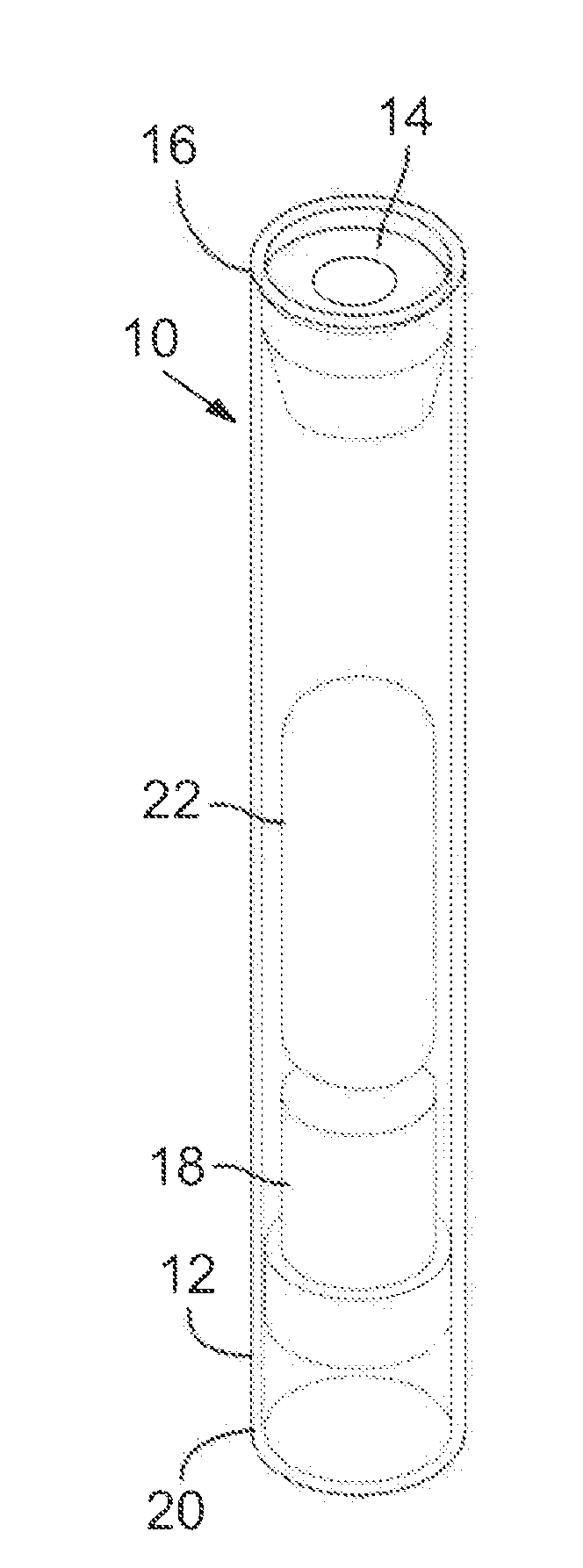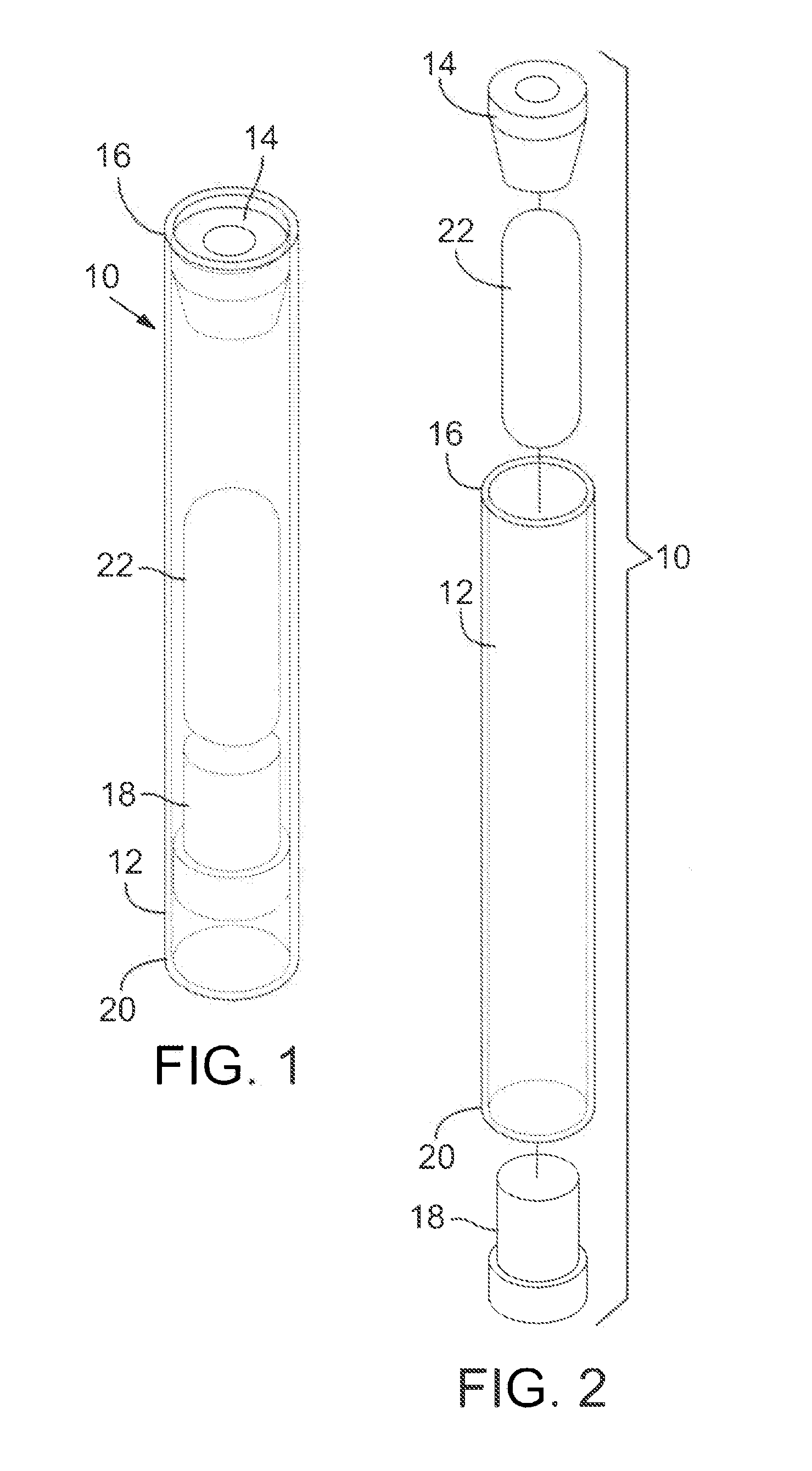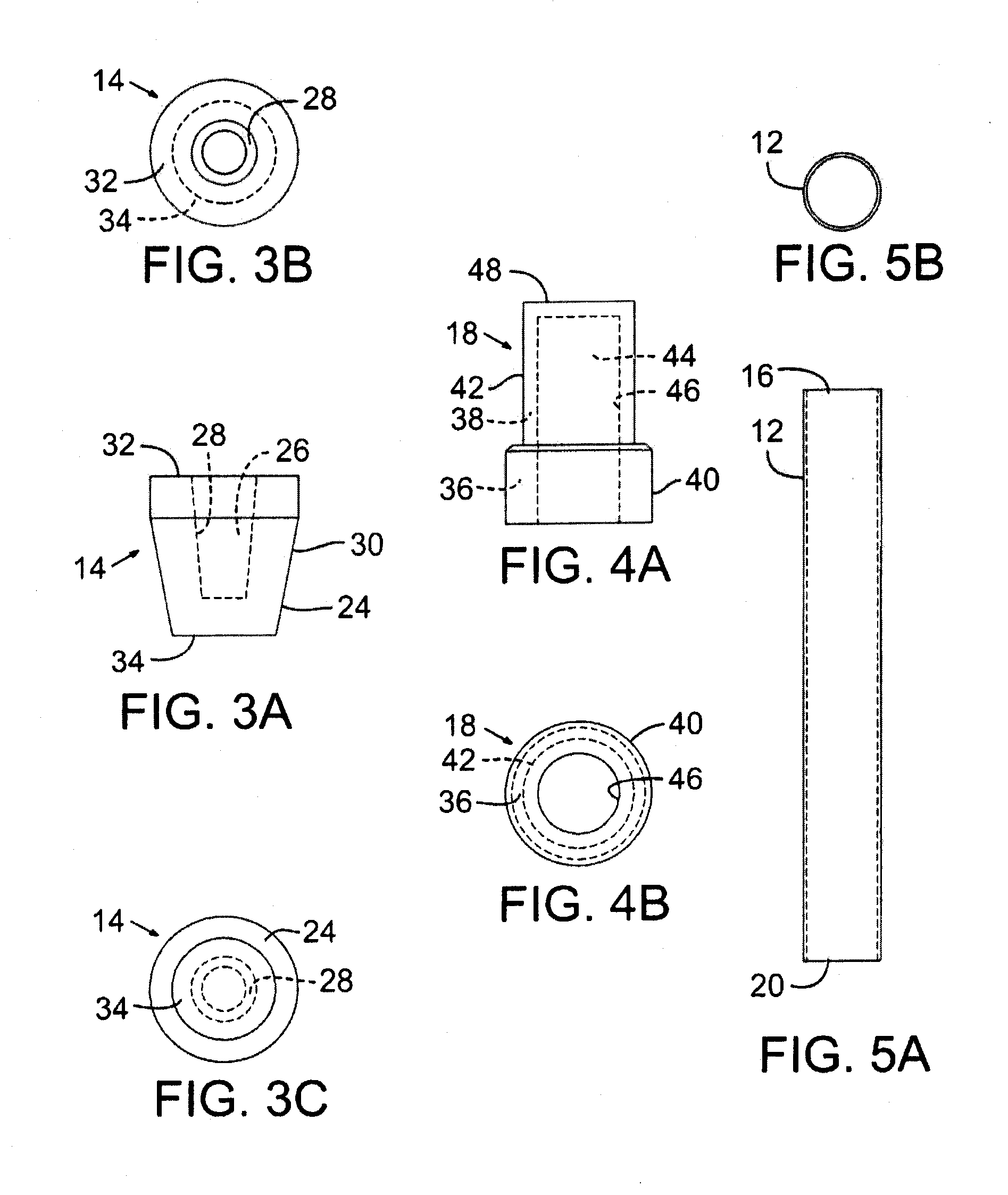Methods and apparatuses for detecting analytes
- Summary
- Abstract
- Description
- Claims
- Application Information
AI Technical Summary
Benefits of technology
Problems solved by technology
Method used
Image
Examples
example 1
100 parts of “Kieselgel 100” silica gel made by Merck AG, previously well dried at 110 degrees C., 184 parts (=100 parts by vol.) of 98% sulphuric acid, 15 parts of iodine pentoxide and 5 parts of cerium(III) nitrate hexahydrate, Ce(NO3)3.6H2O, are used.
The silica gel is slowly impregnated, with stirring, with the sulphuric acid to give a completely homogeneous mixture. The finely ground iodine pentoxide and the finely ground cerium(III) nitrate hexahydrate are mixed well together and this mixture added gradually to the impregnated silica gel while the latter is still pasty and in any case before it has dried out completely. The resulting product is then rigorously mixed and reduced in size in a shaking machine until a fine, solid granulate material is formed.
A given quantity of the granular material is placed in 5 cm long tubes and compacted to fill a length of 1 cm in the middle of the tube. The reagent mass is held in place between two air-permeable supports. Suitable supports ar...
example 2
Prepare granular solid support by mixing 27 grams of 70-230 mesh silica gel (American Scientific Products, IL) with 200 mL D / I water, and 40 mL concentrated nitric acid. Stir at room temperature overnight. Filter, rinse with D / I water, and vacuum dry. Prepare a 0.2 L of a solution of 1M potassium dichromate (K 2 Cr 2 O 7) in 1M sulfuric acid (H 2 SO 4). Mix pretreated support with the potassium dichromate / acid solution overnight. Filter, rinse extensively. Dry in vacuum oven at 40° C. for 4 hours.
Pack granular support into the interstitial space of a tube assembly, or immobilize onto a strip comprised of an inert plastic film and an adhesive. For the case of a strip (5×0.7 cm) approximately 0.1 grams of indicator is immobilized, as measured via an electronic balance. Insert the strip inside the middle of a testing tube 10 cm long by 1 cm diameter.
Various levels of alcohol vapor are readily introduced into the device by mixing fixed amounts of ethanol with water, rinsing and gargling...
example 3
Schiff Reagent Formulation
1. Dissolve sodium metabisulfite (in water).
2. Add basic fuchsine to the metabisulfite solution and mix until dissolved (about 10 minutes).
3. Add charcoal to the solution, mix for about 30 minutes.
4. Allow mixture to incubate at ambient temperature for at least 24 hours, but less than 36 hours.
5. Filter the solution to remove the charcoal.
6. Adjust the pH of the solution from about 2.5±0.4 to 1.88±0.05 with 75% phosphoric acid.
7. Add small amount of de-ionized water to complete total batch size and mix until solubilized.
8. Store the solution in a glass container and seal with paraffin.
9. Store container in a cool, dry place until use.
Silica Gel Preparation
1. Acidify 644 silica with 3.75% phosphoric acid at a ratio of 1:2 by weight.
2. Mix until homogenous blend is achieved (about 5 minutes).
3. Dry at about 80 degrees Celsius (±5 degrees) to about original silica weight (±about 5%).
4. Cap with argon and seal with paraffin.
5. Store at room temperature until us...
PUM
 Login to View More
Login to View More Abstract
Description
Claims
Application Information
 Login to View More
Login to View More - R&D
- Intellectual Property
- Life Sciences
- Materials
- Tech Scout
- Unparalleled Data Quality
- Higher Quality Content
- 60% Fewer Hallucinations
Browse by: Latest US Patents, China's latest patents, Technical Efficacy Thesaurus, Application Domain, Technology Topic, Popular Technical Reports.
© 2025 PatSnap. All rights reserved.Legal|Privacy policy|Modern Slavery Act Transparency Statement|Sitemap|About US| Contact US: help@patsnap.com



